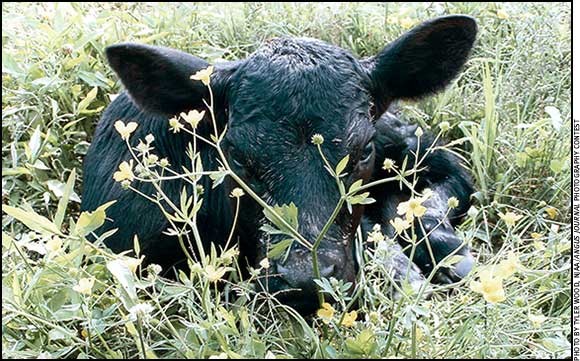
More and more research indicates calf health in the first 60 days is paramount to the long-term performance of the animals, said Victor Cortese, Zoetis Animal Health.
Prime for Health
Getting calves off to a healthy start during the first 60 days primes calves for life.
 At an early morning Cattlemen’s College® session Feb. 1 during the 2017 Cattle Industry Convention in Nashville, Tenn., Victor Cortese took attendance by asking cow-calf producers to raise their hands. He then joked that the stocker and feedlot operators in the room had better take a good look at those cow-calf folks because, he said, “Your problems start there.”
At an early morning Cattlemen’s College® session Feb. 1 during the 2017 Cattle Industry Convention in Nashville, Tenn., Victor Cortese took attendance by asking cow-calf producers to raise their hands. He then joked that the stocker and feedlot operators in the room had better take a good look at those cow-calf folks because, he said, “Your problems start there.”
Cortese, a veterinarian and director of cattle and equine immunology for Zoetis, explained that he made that point to underscore that more and more research indicates calf health in the first 60 days is paramount to the long-term performance of the animals.
He added, “A calf’s highest genomic potential is the day they are born, and then we start to screw it up.”
That said, Cortese emphasized that research in the area of “perinatal programming” is looking at what is important to the calf after it’s born to help it reach its full genetic potential. Thus, cow-calf producers have a crucial role to help put calves on their best path for performance.
As one example, research during the past decade suggests colostrum is not only important to the immediate health and immunity of the calf — but colostrum’s biggest impact may actually be in influencing a calf’s long-term performance. Cortese reports that researchers are finding that the presence of hormones, insulin, leptin and relaxin — all found in colostrum — are responsible for influencing long-term feed efficiency, gain, appetite and management of stress.
Of this emerging research, he says, “Colostrum transfer is one of the best predictors of how calves will do.”
Cortese also shared that research findings suggest that the more growth a calf has in the first 60 days of life, the more efficient that calf will be throughout its life. Cortese suggested a good rule of thumb is to double a calf’s birth weight by about 60 days.
A second area of emerging research that Cortese shared with attendees was the concept of “prime boost,” which he described as utilizing — and properly administering — vaccinations to cattle at different life stages. He suggested thinking about the stages as “a baby, maintaining them through being a teenager and then through to adulthood.”
Essentially, prime boost research indicates that more vaccine efficacy and disease control can be achieved by combining use of intranasals with injectables. Of the emerging research, Cortese anticipates improved management protocols to come, and says, “It’s changing what we do when vaccinating young calves.

Editor’s Note: Field Editor Kindra Gordon is a freelance writer and cattlewoman from Whitewood, S.D. This article was written as part of Angus Media’s coverage of the 2017 Cattle Industry Convention.






